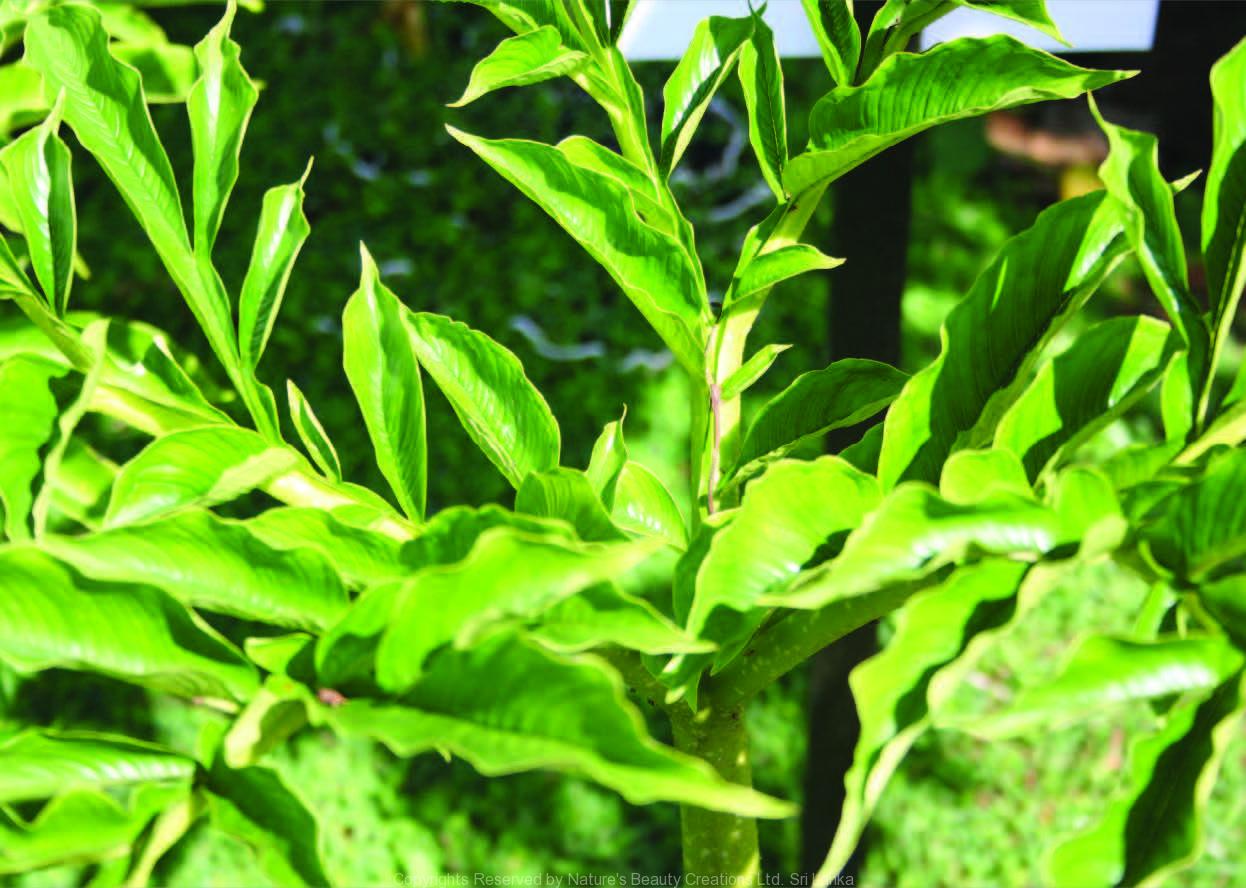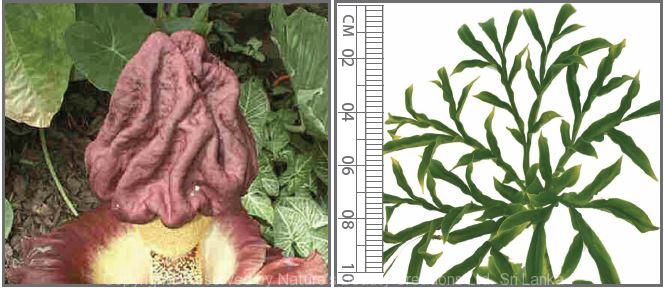

Traditional Knowledge
Useful plant parts :
Root and corm
Uses in traditional medicine :
- Boiled corm is used to treat acute rheumatism, piles, dyspepsia, abdominal colic, elephantiasis and haemorrhoids
- Infusion of the root is used to treat boils and ophthalmia
Scientific Research
Chemical constituents:
Phenolic acid: gallic acid, stilbenoid: resveratrol, flavonoid: quercetin and a water-soluble polysaccharide containing D-galactose, D-glucose, 4-O-acyl-D- methyl galacturonate, L-arabinose from corm
Bioactivity :
Alcohol extracts of corm: vermifuge, vermicidal, antioxidative, free radical scavenging activity
Clinical:
‘Pilex tablet’/ ‘PIL-28’, a herbal formulation in the management of hemorrhoids are made of specially processed fresh juice of corm
Note :
Pieces of boiled corm are edible
References : Angayarkanni, J. et al., (2010), Antioxidant potential of Amorphophallus paeoniifolius in relation to their phenolic content, Pharmaceutical Biology, 48(6), 659-665. Das, D. et al., (2009), Isolation and characterization of a heteropolysac- charide from the corm of Amorphophallus campanulatus, Carbohydrate Research, 344(18), 2581-2585. Dey, Y. N. and Ghosh, A. K., (2010), Evaluation of Anthelmintic Activity of the Methanolic Extract of Amorphophallus Paeoniifolius Tuber, International Journal of Pharmaceutical Sciences and Research, 1(11), 117-121. Khan, A. et al., (2008), Antibacterial, antifungal and cytotoxic activities of amblyone isolated from Amorphophallus campanulatus, Indian Journal of Pharmacology, 40, 41-4. Rangnekar, G. V. and Arora, O. P., (1974), Treatment of Piles with Indigenous Drugs – Pilex Tablets and Ointment along with Styplon, Indian Medical Journal, 10, 240. Vastrad, C. S. and Pakkanavar, R. V., (2002), Evaluation of PIL-28, a herbal formulation in the management of hemorrhoids, The antiseptic, 99(9), 343-344.
Copyrights Reserved By
Natures Beauty Creations



